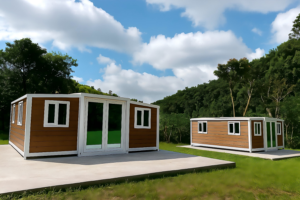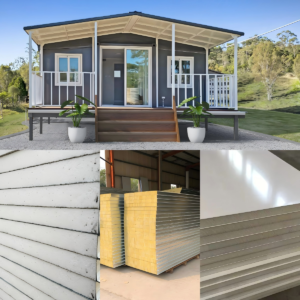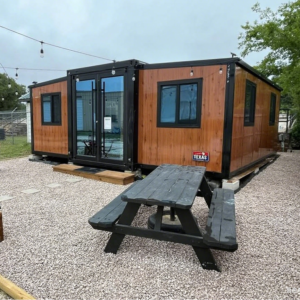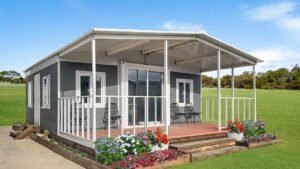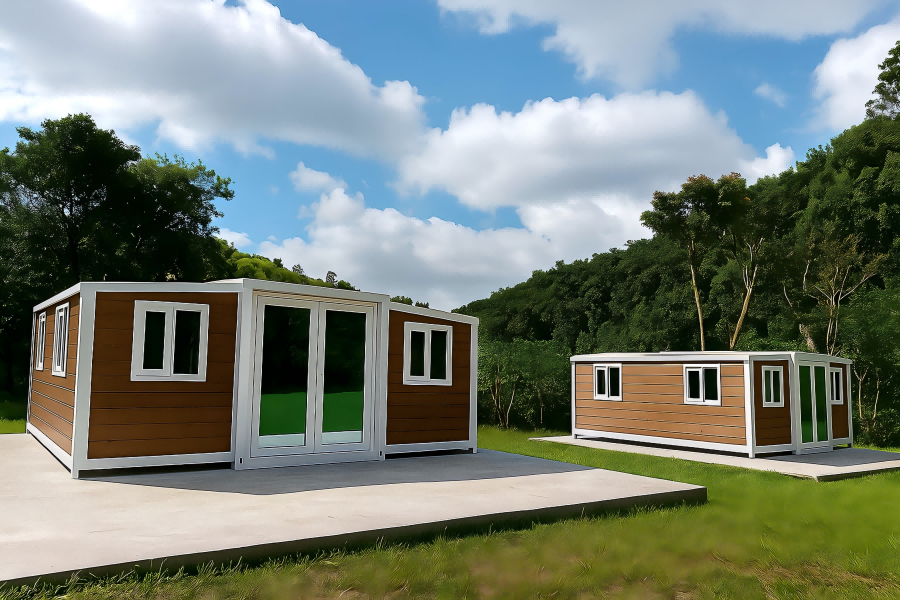
When choosing a prefabricated house, one question stands above all: how many years will it reliably serve? Prefab homes leverage factory-controlled processes to deliver consistent quality, setting them apart from traditional site-built structures. Each prefabricated house relies on materials, design, and maintenance to reach its expected lifespan. Such insights can help buyers ensure that their new prefabricated house remains a sound investment for decades. In this guide, we’ll outline the factors that determine durability, offer procurement tips, and highlight UMD’s expandable container house solution.
Understanding Prefabricated Houses
Prefabricated houses (often called prefab homes or prefab houses) combine off-site manufacturing with on-site assembly.
-
Modular Homes arrive as large volumetric modules and lock together on a permanent foundation.
-
Panelized Systems ship flat panels—walls, floors, roofs—that erectors assemble piece by piece.
-
Kit Homes deliver pre-cut framing, cladding, and fixtures for contractor or owner-builder assembly.
Each prefabricated house type offers a unique blend of production efficiency and construction flexibility, and most are designed to serve 20–50 years under normal upkeep.
The Benefits of Prefab Homes
-
Rapid Delivery
-
Prefab homes cut weather delays and reduce build time by up to 40%, so you can move into your prefab house sooner.
-
-
Predictable Costs
-
Factory bulk purchasing and controlled workflows lower material waste and labor variability, keeping overall expenses transparent.
-
-
Consistent Quality
-
Stringent shop-floor inspections ensure each panel and module meets exacting standards—far tighter than many on-site builds.
-
-
Customizable Designs
-
From exterior cladding options to interior layouts, digital modeling allows adjustments before manufacturing starts.
-
-
Sustainability & Efficiency
-
Centralized production reduces construction waste by over 50%, while high-performance insulation in prefabricated homes can cut energy usage by 25%.
-
Factor 1: Quality of Materials and Construction
The core strength of any prefabricated house lies in its raw materials and factory craftsmanship:
-
Structural Frame: Options include steel—valued for durability and corrosion resistance—and treated timber, which offers a renewable choice when properly sealed.
-
Wall and Roof Panels: Composite or sandwich panels blend insulation, waterproofing, and load-bearing features; top coats resist aging while cores block moisture.
-
Connections and Seals: Precision-engineered joints and weatherproof gaskets prevent leaks and ensure modules move in sync under wind or seismic loads.
Factor 2: Climate and Environmental Conditions
Every prefab house must withstand its local climate:
-
Temperature Swings: Regions with large temperature differentials benefit from materials that tolerate expansion and contraction, plus built-in expansion joints.
-
Coastal Exposure: Shoreline homes need rust-resistant fittings and periodic wash-downs to remove salt spray.
-
Humidity and Dryness: In damp areas, moisture barriers and good ventilation prevent mold; in arid zones, finishes must resist cracking.
Most manufacturers offer climate-specific upgrades—reinforced components, thicker insulation, or UV-stable finishes—to keep prefabricated homes performing well in any environment.
Factor 3: Design and Structural Integrity
A well-designed prefabricated house balances form and function:
-
Module Seams: Effective seals at panel interfaces block wind, rain, and outdoor noise.
-
Wind and Seismic Resistance: In high-risk zones, added bracing and reinforcement at corner nodes boost resilience.
-
Roof Overhangs and Drainage: Properly sized eaves and integrated gutters channel water away from foundations, preventing damage.
These details keep a prefab home safe and comfortable for its entire service life.
Factor 4: Maintenance and Upkeep
Even the most robust prefabricated homes need regular care to reach their full lifespan:
| Task | Frequency | Purpose |
|---|---|---|
| Roof & flashing inspection | Annually | Catch small cracks before they leak |
| Sealant and caulk renewal | Every 3 years | Maintain airtight and watertight seals |
| Gutter cleaning | Twice a year | Prevent water backup and foundation issues |
| HVAC filter replacement | Quarterly | Ensure system efficiency and air quality |
| Exterior coating touch-up | Every 5–7 yrs | Preserve protective finish |
Routine checks and prompt repairs help your prefabricated house stay in top condition.
Factor 5: Quality of Assembly and Installation
On-site execution seals the value of any prefab home:
-
Precise Placement: Modules must set on perfectly level foundations; even minor misalignment can compound over time.
-
Skilled Crews: Certified installation teams use proper tools and follow manufacturer guidelines to secure bolts, seals, and connectors.
-
Independent Oversight: Third-party inspections confirm that every joint and fastener meets design tolerances.
Professional assembly ensures that factory precision carries through to the finished house.
Procurement Guide for Long-Lasting Prefabricated Homes
-
Assess Manufacturer Capabilities
-
Tour the production facility, review workflow, and inspect model homes.
-
-
Review References
-
Ask for completed project examples and speak with existing homeowners about their experience.
-
-
Confirm After-Sales Support
-
Understand warranty coverage, duration, and access to spare parts or repairs.
-
-
Customize for Your Climate
-
Select cladding, insulation, and waterproofing options that fit local conditions and personal preferences.
-
Product Spotlight: UMD Expandable Container Homes
-
Fast Expansion – Side-wall panels unfold in about 15 minutes, boosting interior by up to 40%.
-
High-Performance Materials – Marine-grade steel frames and energy-efficient sandwich panels strike a balance between strength and insulation.
-
Proven Durability – Hundreds of units in varied climates show minimal repairs, backed by UMD’s national service network.
Conclusion
A prefabricated house can deliver reliable service for 20–50 years or more when built with quality materials, designed for local conditions, installed precisely, and maintained regularly. By focusing on these five key factors—and partnering with a reputable builder like UMD—you’ll secure a durable, cost-effective home that stands the test of time.


